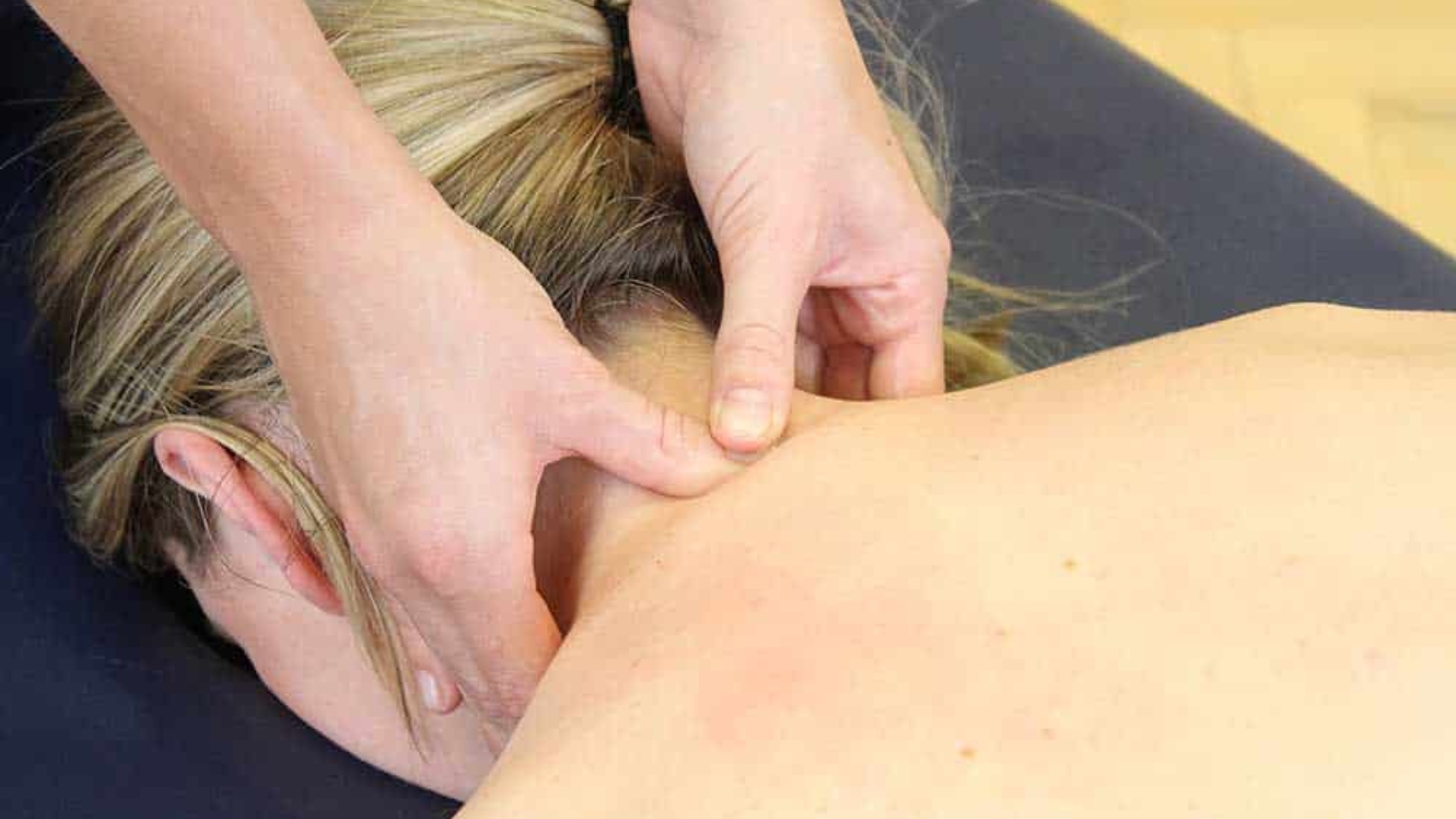
Introduction to Massage Therapy for Chronic Pain
Chronic pain. A relentless enemy that mutters in your ears with every hurt, throb, and pain. It robs you of joy, interferes with your sleep, and prevents you from living life to the utmost. But do not be alarmed, fighters against chronic pain, for you have a potent tool in your toolbox: massage therapy for chronic pain.
This age-old ritual goes beyond simple relaxation. This strategic tool has been clinically demonstrated to enhance quality of life and enable self-management of chronic pain. Put aside your thoughts of soft robes and fragrant candles. The goal of massage therapy for chronic pain is to address the underlying cause of your discomfort by applying a range of specialized techniques.
Picture a society in which your every action is not dictated by pain. Imagine living in a world where your allies are better circulation, less stress in your muscles, and an increase in endorphins, the body’s natural painkillers. This and much more is provided by massage therapy for chronic pain.
Explore this in-depth tutorial to learn how Massage Therapy for Chronic Pain can be your reliable tool in the battle against this relentless opponent. We’ll delve into the science underlying alleviation, expose you to the range of tools available to you, and help you develop a long-term pain management plan that gives you back control. Are you prepared, warriors, to retaliate and find your inner strength? With massage therapy for chronic pain, let the road to a pain-free future begin!
Chronic Pain: The Hidden Threat
Unlike acute pain, which indicates an injury, chronic pain lasts for more than three months. It can originate from several illnesses, including traumas, neurological disorders, muscle strain, arthritis, and tension in any region of the body.
The ongoing stress of chronic pain can be crippling, affecting your energy, emotions, sleep patterns, and capacity to engage in things you used to like. It may cause you to feel alone and irritated, making you long for solace.
Massage Therapy for Chronic Pain: A Comprehensive Strategy
Massage Therapy for Chronic Pain isn’t a one-size-fits-all solution. Therapists utilize a variety of techniques, each targeting specific aspects of chronic pain. Here are some of the most common ones:
- Swedish massage: This kind, of soothing method, improves circulation, eases tense muscles, and encourages relaxation with long strokes, kneading, and friction. For people who are new to massage therapy for chronic pain, it’s an excellent place to start.
- Deep Tissue Massage: This more forceful method breaks apart adhesions and persistent tension knots in the muscles that cause discomfort. It works especially well for pain brought on by repetitive strain injuries or overuse injuries.
- Targeted trigger points: hypersensitive spots in muscles that have the potential to radiate pain are the focus of trigger point therapy. Therapists can reduce discomfort and increase the range of motion by applying pressure to these sites.
- Myofascial Release: The fascia, or connective tissue that surrounds muscles, is compressed continuously with this technique. Therapists can alleviate pain and enhance flexibility by loosening limitations in the fascia.
- Sports massage: Sports massage is a specialty method designed to treat and prevent injuries that are frequent among sportsmen. It incorporates several methods to enhance the range of motion, muscular recovery, and flexibility.
The Science Behind the Relief: How Massage Therapy for Chronic Pain Works
Massage Therapy for Chronic Pain works by addressing several key mechanisms within the body:
- Pain Reduction: The body’s natural painkillers, endorphins, are released when massage therapy is applied. This can enhance your ability to tolerate discomfort and lessen your sense of pain.
- Enhanced Circulation: The application of massage techniques improves circulation to specific locations, supplying nutrients and oxygen to aid in the healing process and lessen inflammation. This can greatly reduce stiffness and soreness.
- Decreased Muscle Tension: Stubborn pain frequently causes tense muscles. Kneading and pushing are two massage techniques that assist in the release of tense muscles, increase flexibility, and lessen pain.
- Relieving Stress: Stress and chronic pain frequently coexist. The relaxing effects of massage therapy can aid in lowering stress hormones, which can enhance mood, enhance sleep quality, and assist manage pain all around.
- Increased Range of Motion: Your range of motion may be restricted by pain or tightness. Massage therapy can assist increase joint mobility and flexibility, giving you greater freedom to move around and take part in activities you might not have done before.
Beyond the Surface: The Psychological Advantages of Massage Therapy for Chronic Pain
The advantages of massage therapy for chronic pain go beyond the body. Massage therapy helps lessen tension and anxiety, which can aggravate chronic pain, by fostering a kind and comforting environment. A therapist’s human touch and constructive interactions can also greatly elevate your mood and sense of well-being, giving you the ability to deal with your suffering more optimistically.
The Pain Warrior’s Toolbox: Selecting the Appropriate Massage Therapy for Chronic Pain
Finding the best therapist and technique for your needs is crucial when using massage therapy for chronic pain management. Here’s how to assemble your toolset as a pain warrior:
- Find a Qualified Therapist: Seek out therapists who have received certification from a respectable massage therapy association. Never be afraid to inquire about their experience with chronic pain.
- Communicate Your Needs: Talk about your goals, diagnosis, and past experiences with pain before your first appointment. This enables the therapist to design a personalized course of care.
- Start Lightly: If you’re new to using massage therapy for chronic pain, start with a lighter touch and shorter sessions. Increase the pressure and duration gradually as you become used to it.
- Pay Attention to Your Body: Your body uses pain as a communication tool. Pay attention to how your body reacts both during and after a massage. Let your therapist know if you’re uncomfortable so they can modify the pressure or method.
Developing a Long-Term Pain Management Plan
The best results with massage therapy for chronic pain come from a complete approach to pain management. Here are a few more tools to think about:
- Exercise: Strength, flexibility, and pain tolerance can all be enhanced by regular physical activity, even low-impact activities like swimming or walking.
- Physical Therapy: To target certain pain origins, physical therapists might design individualized exercise regimens and apply manual therapy techniques.
- Heat and Cold Therapy: Targeted regions can be treated with heat or cold packs to temporarily relieve pain and reduce inflammation.
- Relaxation Methods: Methods like progressive muscle relaxation, deep breathing exercises, and mindfulness meditation can help reduce stress and enhance sleep, which both have a major impact on chronic pain.
- Healthy Diet: A nutritious diet gives your body the building blocks it needs to mend and regenerate damaged tissue.
The Road to Recovery: Realistic Expectations with Massage Therapy for Chronic Pain
Massage Therapy for Chronic Pain isn’t a magic bullet. It’s a journey of progress, not a one-time fix. While some may experience immediate relief, others may require multiple sessions to see noticeable improvements.
When receiving massage therapy, use patience and consistency. Openly discuss your expectations with your therapist and make any necessary adjustments. Appreciate minor successes like improved sleep, a wider range of motion, or less severe pain. Any of them represents a turning point in your journey toward greater living standards.
Conclusion
Chronic pain doesn’t need to be irreversible. By using Massage Therapy for Chronic Pain as part of your pain management plan, you take an active role in healing rather than being a helpless sufferer.
With its benefits supported by science, this age-old method provides a comprehensive approach to pain management. Progress is being made, not a quick fix. Appreciate minor successes like improved sleep, a wider range of motion, or less severe pain. Any of them represents a turning point in your journey toward greater living standards.
Recall that you are not fighting this battle alone. You can overcome chronic pain and lead a satisfying life if you have the necessary information, have a helpful therapist, and have a warrior mentality. Accept the healing power of touch, give self-care priority, and set out to live a life free of suffering.
With the help of massage therapy for chronic pain, you may take back control of your life, better manage your pain, and feel better overall. So, assume leadership! Investigate the available options, locate a licensed therapist, and start along the road to a future free from pain. Remind yourself that you can overcome chronic pain. You can win this conflict and take back the life you deserve if you choose Massage Therapy for Chronic Pain as your ally.


